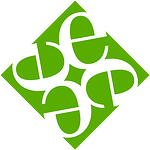7 Things You Need to Know About Self-Directed IRAs and Taxes
 With the April 15 tax deadline mere weeks away, everyone can benefit from a refresher on the tax advantages of Self-Directed IRAs.
With the April 15 tax deadline mere weeks away, everyone can benefit from a refresher on the tax advantages of Self-Directed IRAs.
- Reduce your taxes when you start taking distributions by contributing to a Roth IRA. Roth contributions don’t reduce your current tax obligations, but you won’t owe taxes on the distributions you take later. The 2014 maximum contribution to a Roth IRA is $5,500 for people 49 and younger; $6,500 for people 50 and older.
- You pay no taxes on the earnings grown in your tax-advantaged retirement accounts until you decide to distribute.
- If you took required distributions from a Traditional IRA in 2014, you don’t have to fill in any additional forms. You just include the amount of the distributions as ordinary income.
- If you received non-qualified distributions from a Roth IRA (other than a rollover, qualified charitable distribution, one-time distribution to fund a Health Savings Account, recharacterization, certain qualified distributions, or a return of certain contributions), you will report that income on Form 8606. However, if you received qualified distributions, your custodian simply needs to report a code Q on the IRS form 1099-R. In this case Form 8606 is not required.
- If you inherited an IRA, you must include any distributions you took as ordinary income.
- Depending on your income, you may qualify for a Retirement Saver’s tax credit. This gives you an added tax break to encourage retirement savings.
- Lower your 2014 tax bill by contributing to your self-directed retirement account.
- The maximum contribution to a Traditional IRA is $5,500 for people 49 and younger; $6,500 for people 50 and older.
- If you have a Simple IRA plan, employees can defer up to $12,000; employees 50 and older benefit from an additional $2,500 catch-up contribution.
- A SEP IRA allows you to shelter a maximum of 25% of your compensation, up to $52,000.
- Read the complete list of contribution limits, including those for Coverdell ESA and Health Savings Accounts.
If you want more information about 2014 distributions from IRAs, read this up-to-date IRS publication.
Share this page:





























0 Comment